|
Author
|
Topic: Earth-moon photos from interplanetary spacecraft
|
LM-12
Member Posts: 4021
From: Ontario, Canada
Registered: Oct 2010
|
 posted 11-04-2024 04:25 PM
posted 11-04-2024 04:25 PM
  
Photos like this really make you stop and think how small we are in a vast universe. Similar photos were taken from various interplanetary spacecraft. Do you have a favourite? Looking homeward in its long journey to Jupiter, NASA's Juno spacecraft offered up this rare view of our home planet with its moon. The spacecraft was some six million miles (nearly 10 million kilometers) from Earth when it took this photo on August 26, 2011. 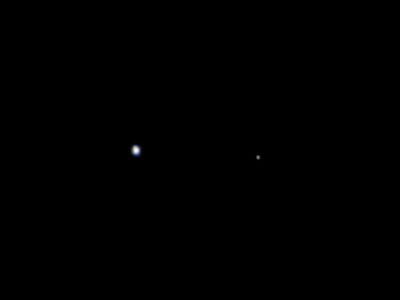 |
SpaceAholic
Member Posts: 5407
From: Sierra Vista, Arizona
Registered: Nov 1999
|
 posted 11-04-2024 04:29 PM
posted 11-04-2024 04:29 PM
   
Europa Clipper may be able to grab a few during its outbound, return and outbound redux. |
LM-12
Member Posts: 4021
From: Ontario, Canada
Registered: Oct 2010
|
 posted 11-05-2024 07:34 AM
posted 11-05-2024 07:34 AM
  
This long-exposure photo is even more impressive because of the stars. It was taken in 2010 on the Messenger mission to Mercury. Earth and Moon from 114 million miles. 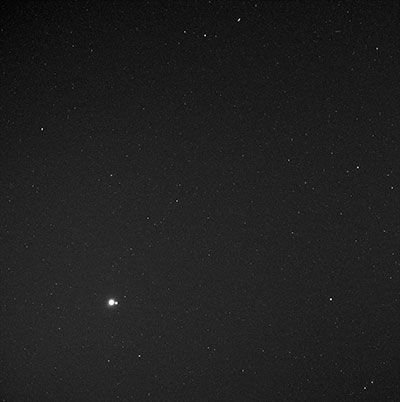 |
Headshot
Member Posts: 1350
From: Vancouver, WA, USA
Registered: Feb 2012
|
 posted 11-12-2024 10:52 AM
posted 11-12-2024 10:52 AM
   
There is an interesting picture here: OSIRIS-REx took a look back at home while making its way toward the asteroid Bennu. 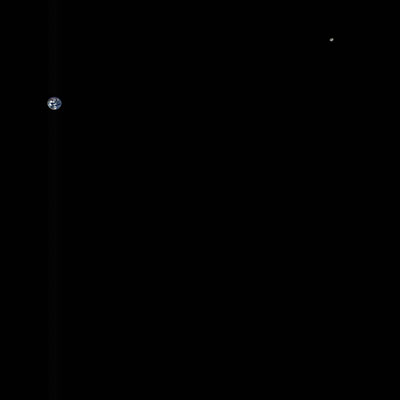 |
Blackarrow
Member Posts: 3774
From: Belfast, United Kingdom
Registered: Feb 2002
|
 posted 11-12-2024 11:39 AM
posted 11-12-2024 11:39 AM
  
Yes, we're pretty insignificant. |
Headshot
Member Posts: 1350
From: Vancouver, WA, USA
Registered: Feb 2012
|
 posted 11-12-2024 11:55 AM
posted 11-12-2024 11:55 AM
   
What is really scary is that the Moon is actually about 30-34 Earth diameters away from the center of the Earth. In this Osiris-Rex image, the Moon is only about 22 Earth diameters away due to foreshortening. It gives how far the Apollo astronauts traveled even more perspective. |
LM-12
Member Posts: 4021
From: Ontario, Canada
Registered: Oct 2010
|
 posted 11-12-2024 05:31 PM
posted 11-12-2024 05:31 PM
  
Amazing bit of trivia from this NASA webpage: The other seven major planets could just fit into the space between Earth and its moon. |
LM-12
Member Posts: 4021
From: Ontario, Canada
Registered: Oct 2010
|
 posted 11-12-2024 09:52 PM
posted 11-12-2024 09:52 PM
  
This photo of Earth was taken by the Cassini spacecraft at Saturn. If you zoom in, you can see the moon to the left of Earth. This view from NASA's Cassini spacecraft shows planet Earth as a point of light between the icy rings of Saturn.The spacecraft captured the view on April 12, 2017 at 10:41 p.m. PDT (1:41 a.m. EDT). Cassini was 870 million miles (1.4 billion kilometers) away from Earth when the image was taken. 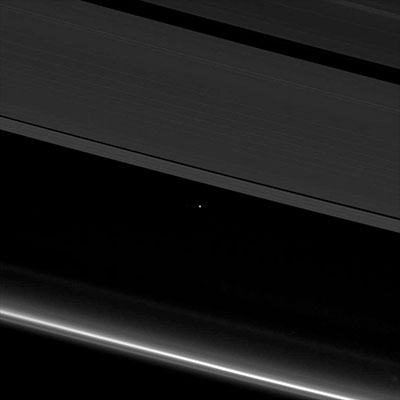 |
LM-12
Member Posts: 4021
From: Ontario, Canada
Registered: Oct 2010
|
 posted 11-13-2024 09:18 PM
posted 11-13-2024 09:18 PM
  
Photos of the moon orbiting Earth from ESA's Mars Express orbiter. Amazing. The sequence of images was acquired by the super resolution channel (SRC) of Mars Express's High Resolution Stereo Camera (HRSC), which is primarily used for observing Mars's two moons and the stars. They show the Earth and its moon on 15, 21 and 27 May, and 2 June 2023. This covers more than half of the Moon's monthly orbit around Earth. 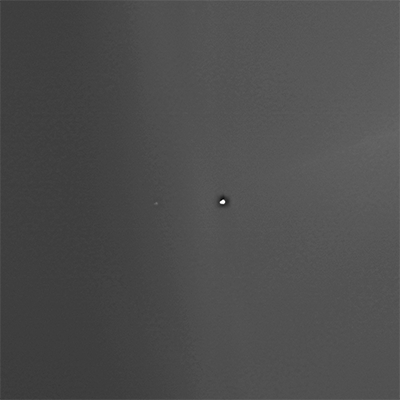 |
LM-12
Member Posts: 4021
From: Ontario, Canada
Registered: Oct 2010
|
 posted 11-16-2024 11:25 AM
posted 11-16-2024 11:25 AM
  
Earth and moon from the surface of Mars: This view of the twilight sky and Martian horizon taken by NASA's Curiosity Mars rover includes Earth as the brightest point of light in the night sky. Earth is a little left of center in the image, and our moon is just below Earth. 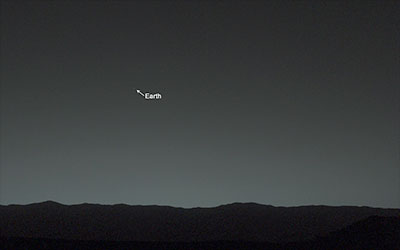 |

















